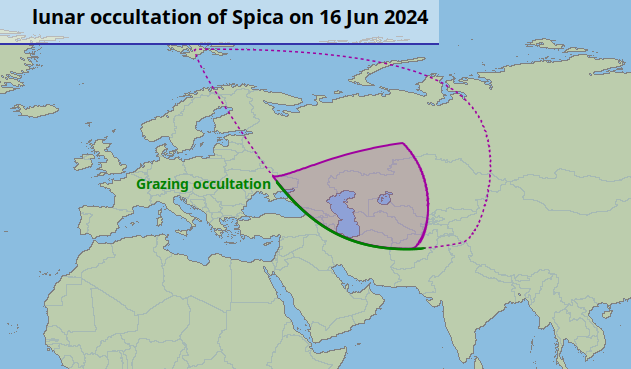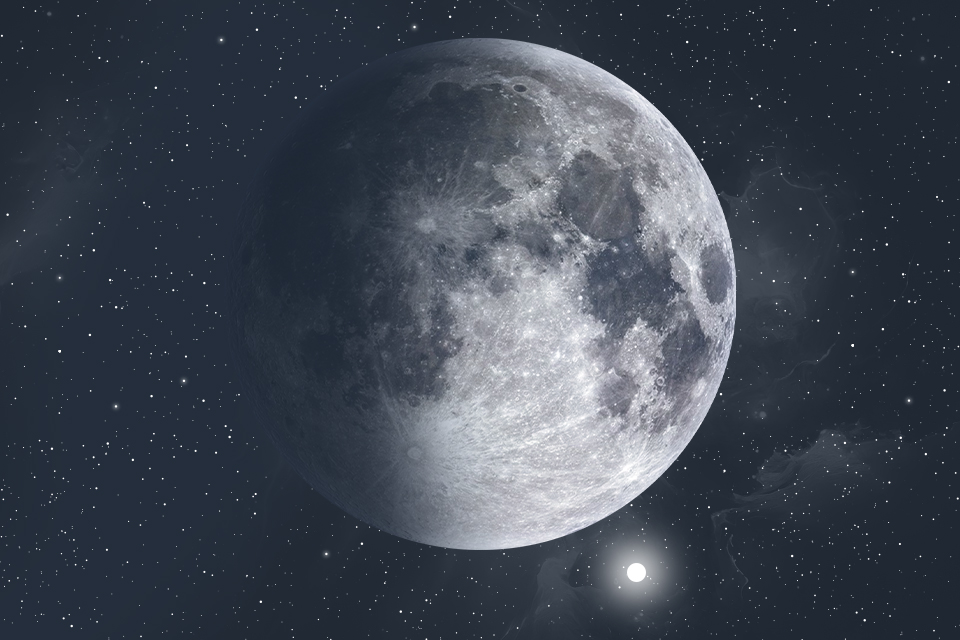Spica is the brightest star in the constellation Virgo and the second brightest “fixed luminary” (after Aldebaran), which occasionally covers the Moon. A series of such occultations is continuing this year, and one of them will be visible from a small part of Ukraine on the evening of June 16. Unfortunately, that part is pretty dangerous nowadays, given the constant fighting.
This time the lunar “shadow” — the zone of space from which Spica will not be visible behind the disk of our moon — will only partially enter the Earth, so the occultation will be observed over an area that will stretch from northern Norway and Finland to Western Siberia in the East, and reach Georgia, Armenia, Azerbaijan, Northern Iran, Afghanistan, Pakistan and even western China in the South. In most of this area, the sky will be bright during the star’s closure, as the Sun will not be very deep below the horizon. Ukraine will be “touched” by the zone of visibility with its western edge. On the conditional line, which will pass approximately through Shostka, Pavlograd and Mariupol, it will be possible to see the so-called tangential coverage, when the Moon literally for a few seconds “touches” Spica.

Such tangent covers provide additional information about the lunar terrain in circumpolar regions, promising from the point of view of building a permanent research base. But they are of value to science only when the star is covered by the dark edge of the moon. In this case, the area of the lunar disk “participating” in the occultation will be illuminated by the Sun.

The sidereal orbital period of the Moon, that is, the time after which it returns to approximately the same section of the starry sky, is 27 days and almost 8 hours. During these 8 hours, the globe “additionally” makes one third of a rotation around its axis, so the next occultation of the same star will be visible in areas “shifted” westward by 100-120° in longitude. Thus, the Moon’s coverage of Spica on July 14 will be observed on the territory of the United States, Canada (however, the phenomenon will occur in bright skies in most of its part) and Central America. Due to changes in the position of the lunar orbit in space, the “lunar shadow” is also gradually shifting in latitude, so after two more sidereal months it will not return to Ukraine and will “visit” Central Africa. In our country, Spica’s next occultation is expected as early as July 15, 2032.
More about the Moon’s orbital motion can be found in this article.


